When the kind-hearted people heard about a dog with an unusually big belly who was roaming around a town, they arrived at the location to investigate.
The dog seemed to be very friendly, and he easily struck up friendships with the other dogs he met. Thinking that he was a female dog, the locals assumed that he was pregnant and they often fed him.
None of them seemed to know the dog’s backstory. All that they knew was that the dog didn’t have an owner and that he spent his days wandering around.
However, the canine was hiding a secret that was about to be revealed.
Trying To Find Out The Dog’s Secret
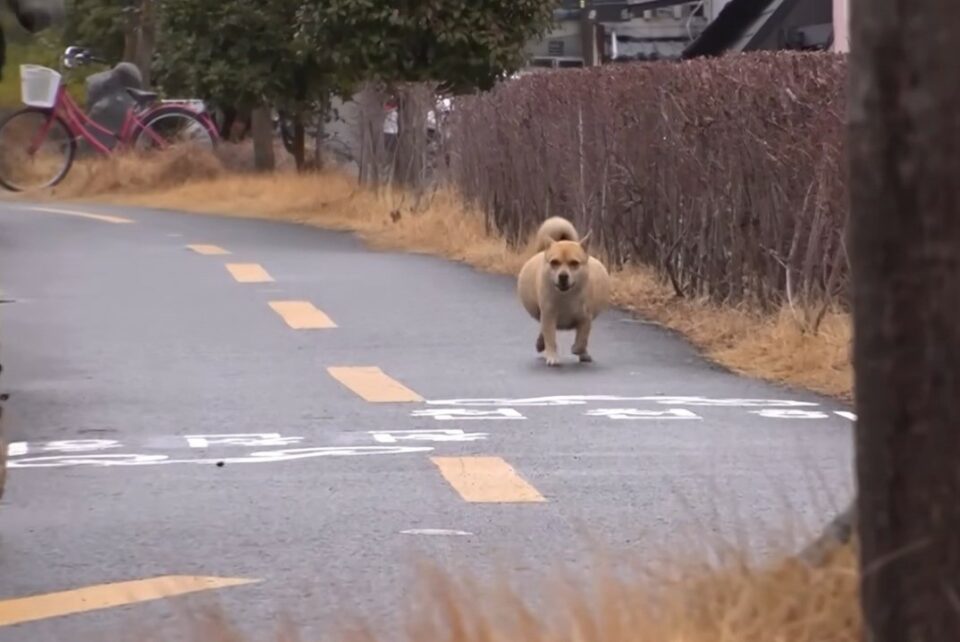
The good people who came to investigate the dog’s backstory met a woman who fed the dog every day. They learned that the pup’s name was Bangwool.
The compassionate woman told them that she and her husband met Bangwool two years ago. He made friends with the couple’s own dog named Ming-gu.
At that time, Bangwool was healthy, and his belly wasn’t swollen.
Although the pup appreciated the kind woman’s help and the food she gave him, he seemed sad and distant. Every time he would finish his food, he would leave in a hurry.
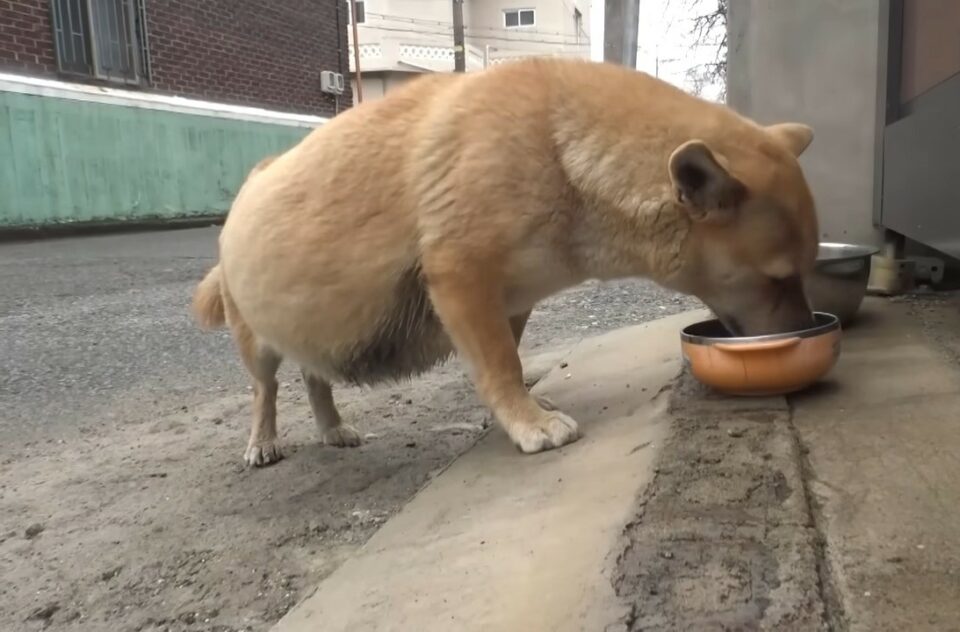
Nobody knew where the canine was going.
Bangwool didn’t open his heart to the other locals. He was reserved toward them.
Determined to find out his secret, the curious people followed the dog as he roamed around the area.
The pup seemed to know where he was going.
Bangwool’s Backstory

After some time, Bangwool entered an unoccupied house.
The people who followed the doggo learned that Bangwool used to live in that house with his owner, who passed away.
They could imagine how sad and lonely Bangwool felt after he lost his human, whom he loved very much.
According to his neighbors, the pup visited his former home every single day, hoping that he would find his beloved owner waiting for him.
After the good humans found out the dog’s story, they called the rescuers and asked for their help to capture Bangwool.
The woman who took care of the pup helped the team rescue Bangwool. She managed to lure him into a rescue frame that the rescuers set up.
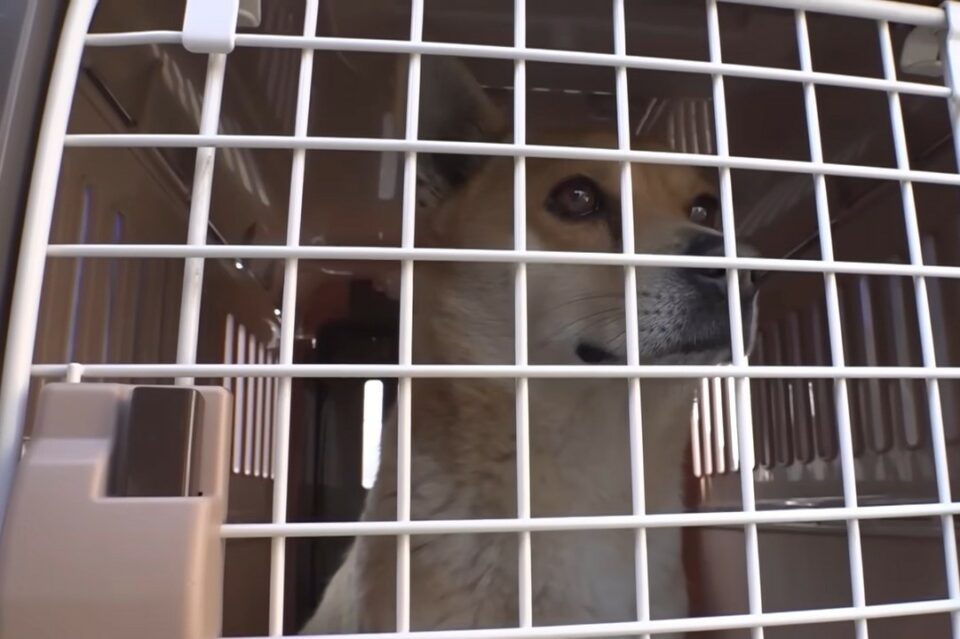
Bangwool felt confused when he found himself inside the crate.
He still couldn’t imagine that his life would change.
Some of the locals couldn’t hold back tears after seeing that Bangwool was finally rescued. They hoped he would get the necessary help and find his happiness.
The sweet pup said goodbye to his caregiver.
The Pup Receives The Happiest News
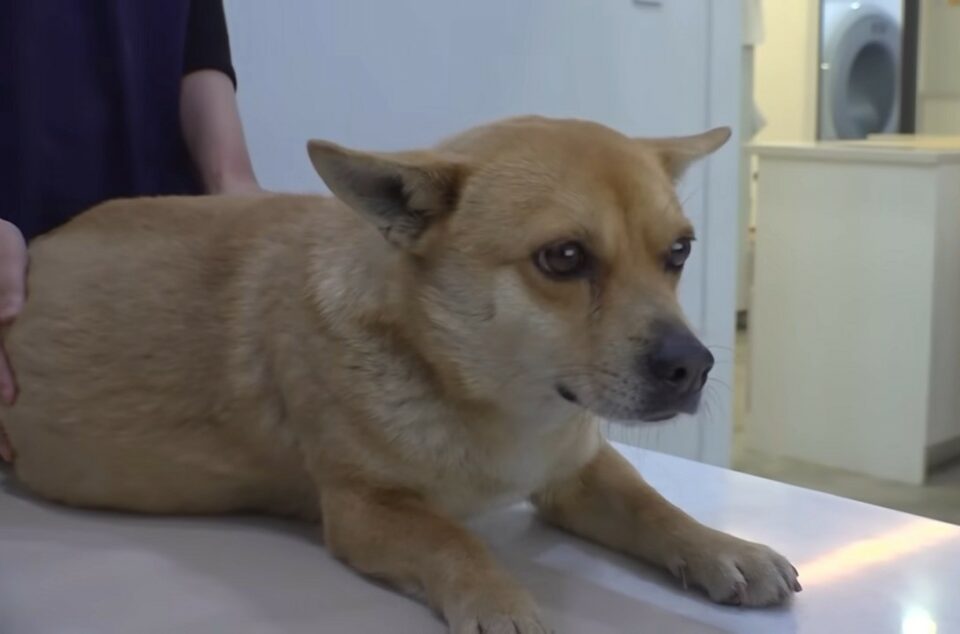
His rescuers took him to the vet, where he was given a thorough medical checkup.
Having performed the necessary tests, the vet came to the conclusion that Bangwool didn’t have a tumor.
The pooch was diagnosed with an inherited heart disease, and he was also infected with heartworm. Since his blood couldn’t be pumped to his heart, it went to his abdomen, where it built up.
The vet team removed the fluid buildup from his stomach, and Bangwool started feeling better. He smiled from ear to ear.
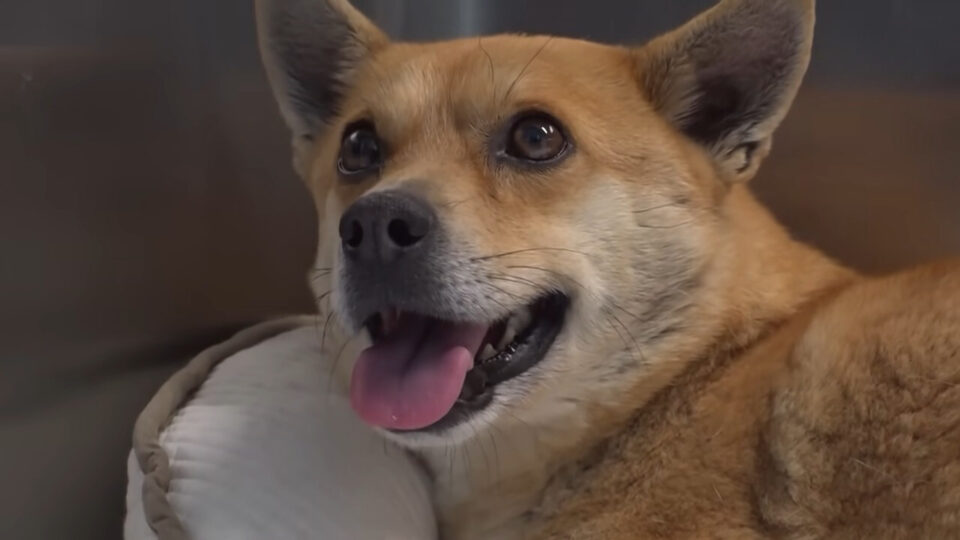
The vet prescribed the doggo heart medicine that he would need to take.
Bangwool stayed at the clinic for a week.
His belly was no longer swollen, and he was ready to be discharged.
The couple who took care of the pooch came to pick him up. They were amazed after they saw Bangwool. He seemed like a totally different dog.
His face was beaming, and he couldn’t stop smiling.
The giant-hearted couple was convinced that the dog was meant to come into their lives. They decided to give Bangwool a loving home.
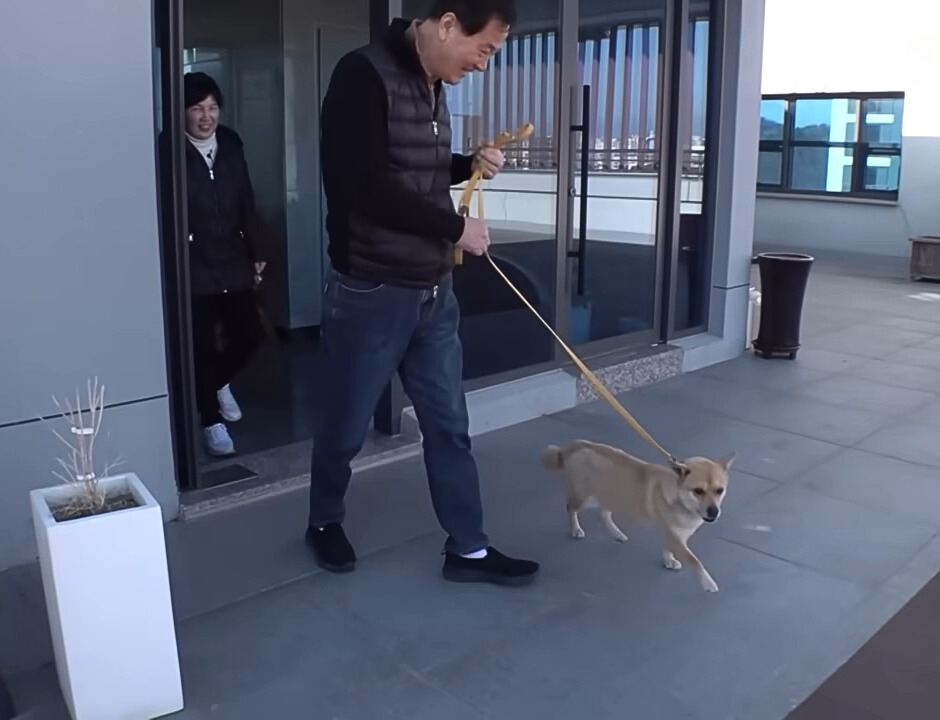
While his new parents cuddled Bangwool, he soaked up all their love. His beautiful eyes no longer looked sad. They twinkled with happiness.
Bangwool turned to his future, and he looked forward to starting a new life with his forever family.
If you’ve got a furry friend at home, you’ve probably wondered about the ins and outs of their reproductive cycle. Understanding how often dogs go into heat is essential for any pet owner. Your pup’s behavior, health, and even your household dynamics can be influenced by this natural process. So, let’s shed some light on this topic to help you navigate your dog’s heat cycles like a pro.
When it comes to your canine companion, knowing the frequency of their heat cycles can be a game-changer. From potential mating opportunities to managing your dog’s behavior during this time, staying informed is key. So, grab a cup of coffee, get cozy, and let’s explore the fascinating world of how often dogs go into heat.
Understanding the Heat Cycle in Dogs
When it comes to understanding the heat cycle in dogs, it’s crucial for dog owners to grasp the basics. Here are the main points you should keep in mind:
1. Frequency of Heat Cycles
- Female dogs typically experience heat cycles every 6 to 8 months.
- Smaller breeds may have more frequent cycles compared to larger breeds.
- Certain factors like age, health, and breed may influence the timing of heat cycles.
2. Stages of the Heat Cycle
- The heat cycle in dogs consists of four stages: proestrus, estrus, diestrus, and anestrus.
- During proestrus, you may notice vaginal bleeding and changes in behavior.
- Estrus marks the fertile period when mating can occur.
- Diestrus follows estrus and marks the period when pregnancy can happen.
- Anestrus is the resting phase between cycles.
3. Signs of Heat
- Common signs of heat in dogs include swelling of the vulva, bloody discharge, increased urination, and behavioral changes.
- Some dogs may attract male attention or exhibit restlessness during this time.
- It’s essential to keep female dogs away from intact males during heat to prevent unwanted pregnancies.
- Options like spaying can help prevent heat cycles and certain reproductive health issues.
Understanding the heat cycle in dogs empowers you to provide the necessary care and attention during this natural reproductive process. Be sure to consult your veterinarian for personalized advice on managing your dog’s heat cycles effectively.
Factors Influencing the Frequency of Heat Cycles
Understanding the frequency of heat cycles in dogs can vary depending on several factors. Here are the key elements that influence how often dogs go into heat:
Breed
Different dog breeds have varying heat cycle frequencies. Smaller breeds may go into heat more frequently than larger breeds.
Age
A dog’s age plays a significant role in the frequency of heat cycles. Younger dogs typically experience heat more often than older dogs.
Environment
Environmental factors such as living with intact males or other female dogs in the household can impact the frequency of heat cycles in female dogs.
Health
The overall health of a dog can affect the regularity of heat cycles. Health issues or conditions may alter the frequency of heat cycles in female dogs.
Spaying
Spaying your female dog can eliminate heat cycles entirely. Consult with your veterinarian to understand the best timing for spaying to manage heat cycles effectively.
Season
Seasonal changes can also influence a dog’s heat cycle frequency. Some dogs may go into heat more often during specific times of the year.
Nutrition
Proper nutrition is essential for a dog’s overall health, which can influence the regularity of heat cycles. Ensure your dog has a balanced diet to support their reproductive cycle.
By considering these factors, you can better understand the frequency of heat cycles in dogs and provide appropriate care for your furry companion. Remember to consult with your vet for personalized guidance on managing your dog’s heat cycles effectively.
Typical Signs of a Dog in Heat
When your furry friend is in heat, there are some typical signs you might notice. Here’s what to look out for:
1. Swollen Vulva
During heat, your dog’s vulva may appear larger than usual and swollen. This is a common sign indicating that your dog is in heat.
2. Changes in Behavior
You may observe changes in your dog’s behavior, such as restlessness, increased vocalization, or seeking more attention than usual.
3. Increased Urination
Dogs in heat may urinate more frequently to attract male dogs. This behavior is part of their natural reproductive instincts.
4. Bleeding
One of the most apparent signs of heat is vaginal bleeding. This bleeding is typically light at the beginning and becomes heavier as the heat cycle progresses.
5. Increased Mounting
Female dogs in heat may exhibit mounting behavior toward other dogs or even inanimate objects as a response to hormonal changes.
6. Attraction from Male Dogs
Male dogs can sense a female in heat from a distance and may show increased interest in your dog during this time.
7. Change in Tail Position
Your dog’s tail might be held differently than usual, either to the side or slightly tucked, signaling that she is in heat.
Observing these signs can help you identify when your dog is in heat and take appropriate measures to ensure her well-being.
Managing Heat Cycles in Dogs
To manage your dog’s heat cycles effectively, consider the following tips:
Spaying
Spaying your dog is an option to prevent heat cycles entirely. This procedure involves removing the ovaries and uterus, eliminating the heat cycle along with the risk of pregnancy. Consult your vet to discuss the best timing for spaying based on your dog’s breed and health.
Supervision and Limiting Outdoor Activities
During your dog’s heat cycle, it’s crucial to supervise her closely, especially when outdoors. Limiting interactions with male dogs can prevent unwanted mating and potential pregnancies. Keep her on a leash or in a secure, enclosed area to ensure her safety.
Comfort Measures
Provide your dog with comfortable bedding and a quiet, safe space during her heat cycle. She may experience mood changes and discomfort, so ensuring she has a relaxing environment can help her feel secure and at ease.
Proper Hygiene
Maintain your dog’s hygiene by gently cleaning her genital area with mild, pet-safe wipes or warm water. This helps prevent infections and keeps her comfortable during this sensitive time.
Consult Your Vet
If you have any concerns about managing your dog’s heat cycles or if you notice any unusual symptoms, consult your veterinarian promptly. They can provide personalized advice and guidance to ensure your furry companion’s reproductive health and well-being.
Conclusion
Understanding your dog’s heat cycle is crucial for their reproductive health. Factors like breed, age, and environment play a role in how often your dog goes into heat. Recognizing the signs of heat and taking proactive measures, such as spaying, supervision, and maintaining hygiene, can help manage their cycle effectively. By providing a safe and comfortable environment and seeking advice from your vet, you can ensure your dog’s well-being during this natural process. Remember, each dog is unique, so staying informed and attentive to your furry friend’s needs is key to navigating their heat cycles successfully.
Frequently Asked Questions
What are the factors influencing a dog’s heat cycle?
Various factors influence a dog’s heat cycle, including breed, age, environment, health, season, and nutrition.
What are the typical signs of a dog in heat?
Typical signs of a dog in heat include swollen vulva, bleeding, increased urination, behavior changes, and male attraction.
How can you effectively manage a dog’s heat cycle?
To manage a dog’s heat cycle effectively, options include spaying, supervision, limiting outdoor activities, comfort measures, hygiene maintenance, and consulting a vet.
How does spaying help prevent heat cycles and pregnancies?
Spaying can prevent heat cycles and pregnancies in dogs by removing the uterus and ovaries, eliminating the reproductive cycle.
When is the best time to spay a dog to prevent heat cycles and pregnancies?
The best time to spay a dog to prevent heat cycles and pregnancies depends on the dog’s breed and health, with recommendations from a veterinarian.
[no_toc]

Hey there, I’m Janet Brooks, a dog-loving student from California. I’m all about helping pups in need, especially those without homes. Me and my awesome friends work together to give shelter and love to stray dogs. Oh, and I also write blogs about dogs to share helpful info.